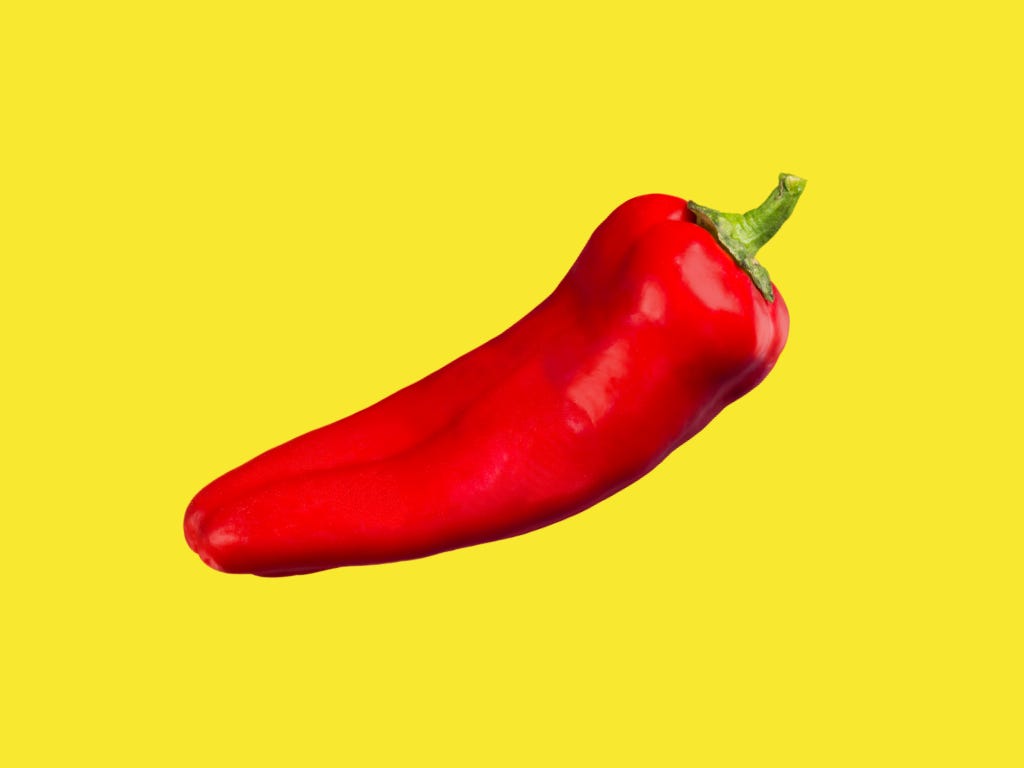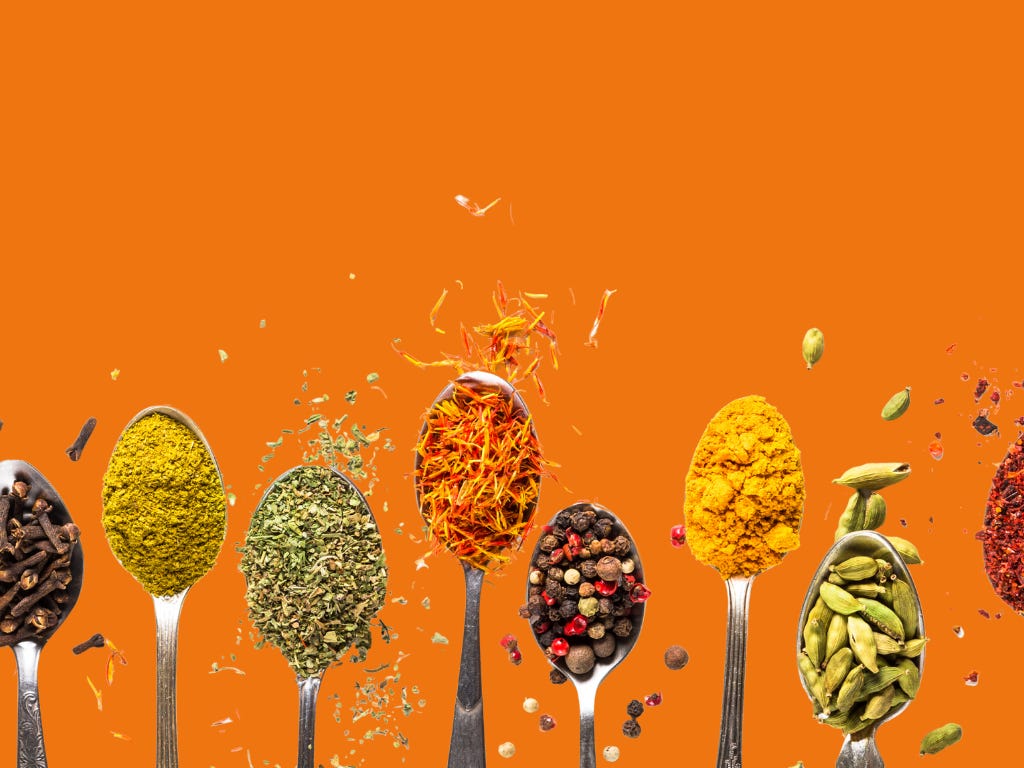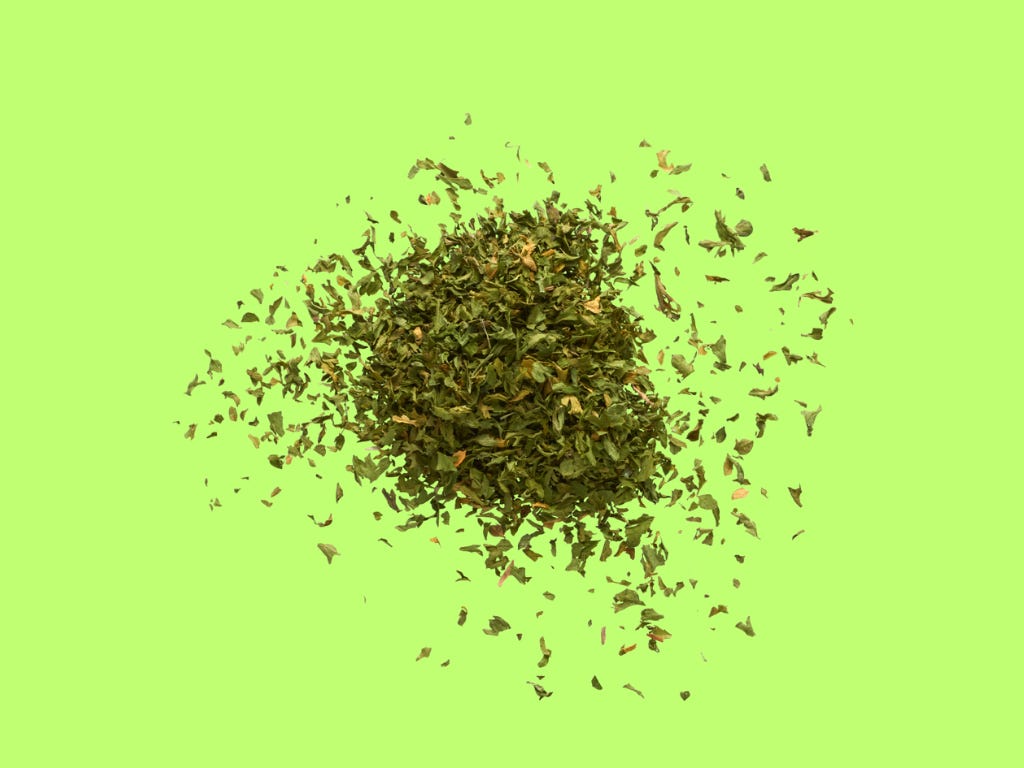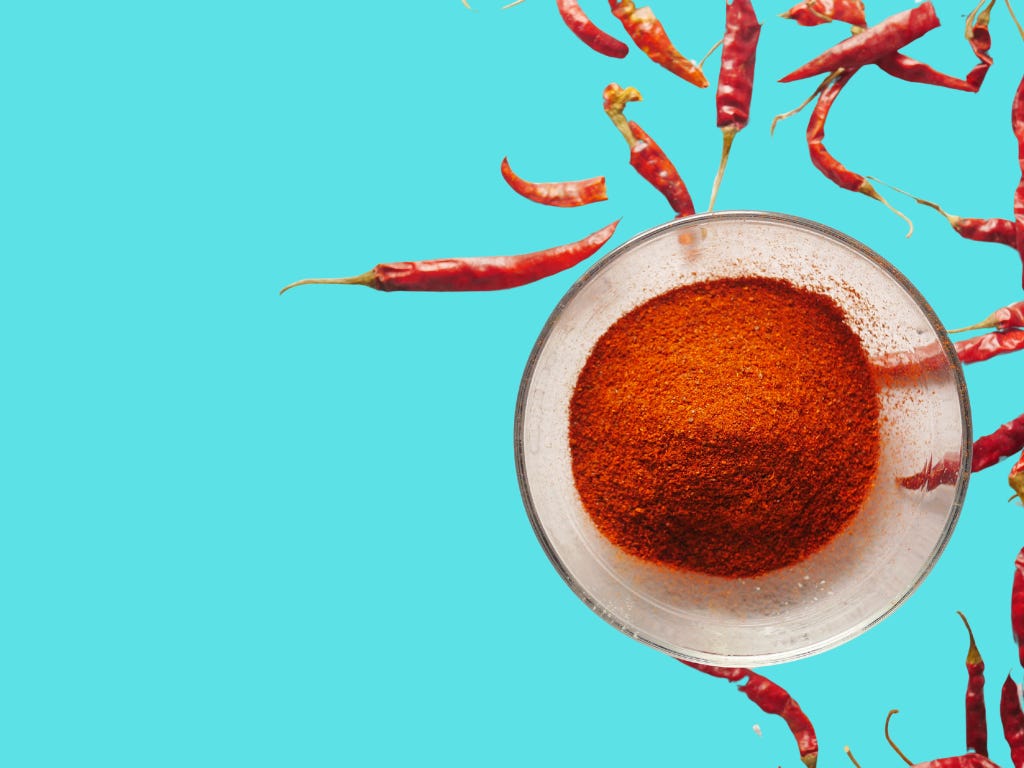Some like it hot 🧠
Do your microbes (and your health) like it spicy?
What if the biggest fibre boosters in your kitchen weren’t beans or chia seeds, but the small amounts of spice you use to make a curry for dinner?
Herbs and spices each pack in around 3,000 different plant compounds - from shaping your gut microbes to slowing down how quickly you eat, they’re doing a lot more than simply adding flavour.
In other words, your spice rack might just be your most underrated health tool.
What we’ll cover today:
Do spices have health benefits beyond flavour?
Can they improve gut health?
Why they’re secretly some of the most fibre-packed foods in your kitchen
How chilli might change the way you eat
Practical tips for adding more spice to your meals
Do spices have health benefits beyond flavour?
Chilli, turmeric, ginger, cinnamon, cumin, cloves, and even lavender have all been studied for effects that go beyond taste - from easing nausea to calming inflammation.
The science isn’t watertight yet (most studies are small and findings can be mixed), but overall, cooking with a variety of herbs and spices looks like an easy way to add a little extra boost to both flavour and wellbeing.
Natural antioxidants that may help protect cells from damage
Relief from everyday symptoms, like ginger for nausea or turmeric for achy joints
Possible effects on metabolism and appetite (chilli’s capsaicin has been linked to weight management and even longer life in some studies)
Calming or mood-lifting effects (lavender has shown anti-anxiety effects, and even just the smell of vanilla can make food taste sweeter)
Do spices improve your gut health?
There’s some growing evidence they might.
In a small study, participants ate curry-style meals that were identical except for the spices - one had none, one had about two teaspoons, and one had about four teaspoons of spices.
Within 24–48 hours, both spice-rich meals altered the amounts of certain gut microbes, and the larger dose boosted levels of Bifidobacterium, a microbe often linked to gut health.
In another study, people at risk of heart disease followed three diets identical in every way except the spice content – from a pinch to a much more generous helping (about 6g, roughly 1–2 teaspoons spread across daily meals).
After four weeks, those on the higher-spice diet had more of certain “good” microbes often thought to make butyrate, a fuel that helps keep your gut cells healthy.
Why? Likely because spices are rich in polyphenols, natural plant compounds that aren’t fully absorbed in the small intestine and end up in the gut, where they can feed certain microbes and rein in others.
But is it just down to the polyphenols they contain…?
Spices secretly steal the high fibre crown
Move over chia seeds and beans.
Some of the most fibre-dense foods in our cupboards are the ones we rarely think about - spices.
Yes spices are brimming with polyphenols, the plant compounds linked to gut and whole-body health, but gram for gram, many spices contain more fibre than almost any other food.
True, we only eat them in pinches.
But even those pinches add up, and they pack more fibre than you might expect.
For example, just one teaspoon of:
Cinnamon ≈ 1 g fibre
Ground cumin ≈ 1 g fibre
Turmeric ≈ 1 g fibre
That’s about the same fibre as a small bowl of salad leaves, condensed into a teaspoon.
Could adding a little extra chilli change how much you eat?
A new study suggests it might.
Researchers served people either beef chilli or chicken tikka masala, made in both mild and spicy versions.
When the spice was strong enough to notice, people ended up eating 11–18% less of the hotter meals.
It wasn’t because they liked them any less - participants rated both versions just as tasty, and they didn’t drink more water either.
The difference came down to speed, the chilli heat simply slowed down how quickly people ate, and that extra time likely gave their bodies a chance to register fullness.
Using herbs and spices is also one way to cut back on salt and saturated fat without losing flavour. In another study, comfort foods were made with less of both and seasoned instead with spices like cinnamon and oregano. Most dishes were rated just as tasty or even better than the originals.
The researchers estimated it could cut population sodium (the part of salt that affects blood pressure) by about 11% and saturated fat by a similar amount.
Practical spicy tips
Keep reading with a 7-day free trial
Subscribe to Second Brain to keep reading this post and get 7 days of free access to the full post archives.








